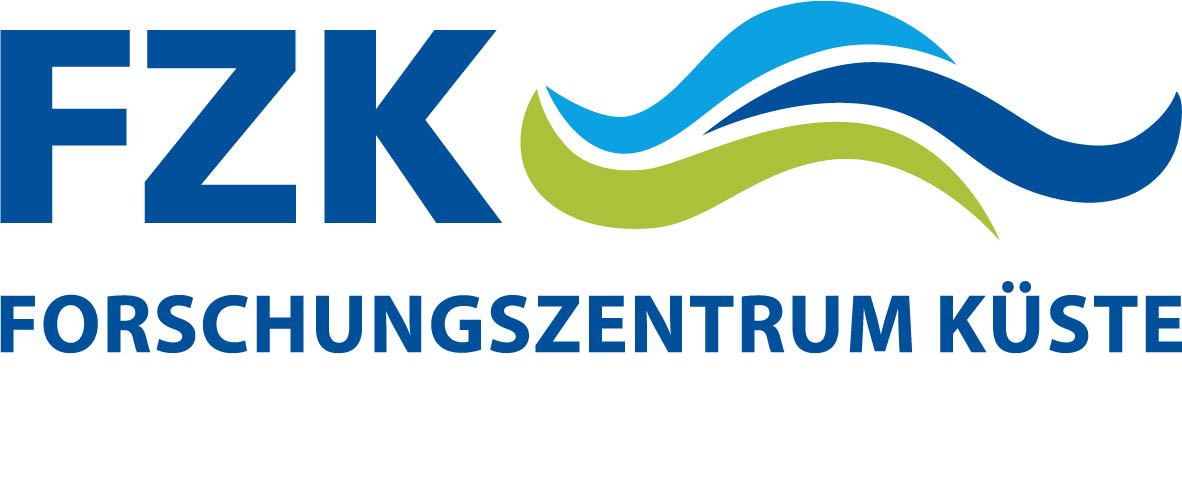Bed Shear Stress on Beach Sediment and Coastal Structures Under Wave Run-up
 © Forschungszentrum Küste
© Forschungszentrum Küste
| Leitung: | Dr. Chris Blenkinsopp |
| E-Mail: | c.blenkinsopp@bath.ac.uk |
| Jahr: | 2013 |
| Förderung: | Australian Research Council |
| Bemerkungen: | 2 Wochen |
Wave run-up describes the phenomenon that occurs when waves break in shallow water at the coast and rush up a beach slope or coastal protection structure. The water running up and down the beach during wave run-up causes sand to be moved around on the beach profile causing changes in the shape of the beach. Large changes in beach shape have been through to be due to the accumulated effects of many waves, however recent experiments have shown that single waves can cause rapid fluctuations in beach volume that cannot be predicted using existing modelling techniques. Wave run-up can cause beach erosion, damage to coastal defences and overtopping, placing the protected infrastructure at risk.
This experiment brought together a team of researchers from University of New South Wales (Australia), University of Queensland (Australia), University of Bath (UK) and University of Delaware (USA) (Figure 1) to investigate the details of the shear stresses that exist between wave runup flows and the seabed that cause sediment to be transported on beaches. Previous studies of this phenomenon have employed a range of techniques, however the results have been inconsistent with each other, mainly due to the difficulties in obtaining suitable measurements. The novelty of this work is that it makes use of the unique GWK facility to allow measurements of shear stress under prototype-scale wave run-up using three different experimental techniques; a fixed shear plate, analysis of detailed free surface measurements obtained using Lidar and application of the log-law using flow velocity measurements through the boundary layer. Deploying three different techniques in a controlled, large-scale laboratory environment enables an assessment of the validity of each method and provides increased confidence in the results.
The installation in Hannover took place in June 2013. Over 50 instruments were installed (see Figure 1) including 3 Lidar laser scanners mounted in the laboratory roof to measure the surface of the waves from the break point to the top of the beach, 45 ultrasonic bed level sensors (BLS) to provide higher accuracy water surface measurements in the region of wave runup, 3 fixed shear plates to directly measure the shear forces imparted by the waves on the seabed, 2 acoustic Doppler profiler (ADVP) instruments which provided measurements of flow velocity at 1mm vertical increments above the seabed and a series of cameras. Measurements were obtained for a wide range of different wave types and for 2 different seabed surface roughnesses.
It was found that the fixed shear plate provided the most accurate and consistent measurements of bed shear stress. The shape of the bed shear signal is very consistent from one wave to the next and the magnitude of bed shear stress is influenced predominantly by the roughness of the seabed and the flow velocity. It was found that there were notable differences between the bed shear stress values measured during these large scale experiments and previous data obtained at smaller scale.
Measurements from the Lidar instruments provided excellent water surface data at all points during the wave run-up cycle (Figure 4) which have been used determine the changing momentum of the fluid flow to allow bed shear stresses to be inferred. The results from this are promising during the uprush part of run-up and are being investigated in further detail. The Lidar data is also being used to investigate other features of wave run-up, in particular the almost unstudied process of bore collapse as waves initially hit the dry beach.

Figure 1. Top Left – Shear plate with added polymer surface roughness. Top Right – 2 co-located Lidar instruments. Bottom Left – ADVP and Electromagnetic current meters
You can find impressions from the tests on youtube.






